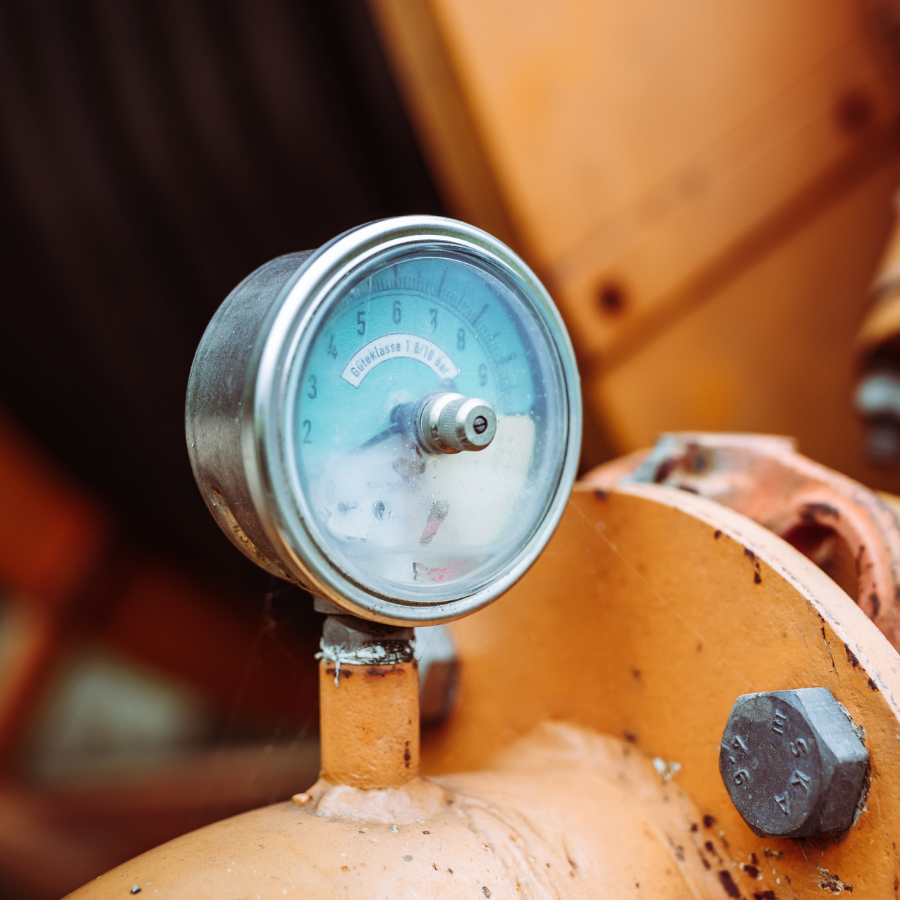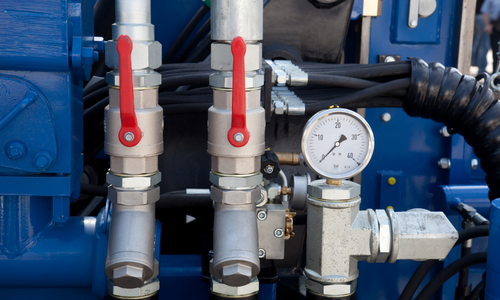Hydraulic Pressure Maintenance: Tips for System Efficiency
Common Hydraulic Pressure System Issues and Step-by-Step Maintenance Procedures
Maintaining optimal hydraulic pressure is undeniably the backbone of peak performance and maximum efficiency in hydraulic systems. Without the proper pressure levels, these complex systems would struggle to deliver the precision and power necessary for their various applications.
In this comprehensive blog, we embark on an enlightening journey, exploring the significance of upholding the right hydraulic pressure and shedding light on the potential consequences that can emerge from inadequate pressure regulation. Whether you’re an experienced industry professional or a curious novice, we have tailored this guide to equip you with invaluable tips and best practices for maintaining hydraulic pressure, ensuring your system operates at its full potential.
So, if you’re eager to unlock the secrets to optimizing hydraulic system efficiency and prolonging the life of your components, you’ve certainly come to the right place! Prepare to dive deep into the realm of hydraulic pressure maintenance and emerge armed with the knowledge needed to elevate your system’s performance to new heights

Understanding Hydraulic Pressure:
Hydraulic pressure is the force exerted on a fluid within a hydraulic system, and it plays a fundamental role in the operation of these systems. When we talk about hydraulic pressure, we often use units like PSI (pounds per square inch) or bar to measure and quantify it.
PSI represents the amount of force exerted on each square inch of the hydraulic fluid, while bar is a metric unit commonly used in Europe and denotes pressure in multiples of atmospheric pressure. Understanding these terms is crucial for clarity in discussing hydraulic systems.
The relationship between pressure and system efficiency is significant. Maintaining the right pressure level is essential for optimal performance. If the pressure is too low, the system may not generate enough force to accomplish the desired tasks effectively. This can lead to sluggish performance, slower response times, and reduced efficiency.
Conversely, excessive pressure places undue stress on the system, increasing the risk of leaks, component failures, and potential safety hazards. By maintaining the proper hydraulic pressure, you ensure that the system operates within its designed parameters, allowing for smooth and efficient functioning. This, in turn, leads to improved productivity, reduced downtime, and enhanced overall system performance.
Importance of Maintaining Optimal Hydraulic Pressure:
Inadequate pressure can have a significant impact on the performance of hydraulic systems. When the pressure falls below the optimal range, several issues can arise. For instance, the system may fail to deliver the necessary force, resulting in reduced power and overall performance.
This can lead to slower operation times, decreased productivity, and even compromised safety in critical applications.
On the other hand, high pressure poses its own set of risks. Excessive pressure puts excessive strain on the system, which can lead to leaks, component damage, and potential failures. These risks not only require costly repairs but also cause unexpected downtime and disruptions to operations.
It is essential to maintain the right pressure balance to ensure the system operates efficiently, delivers the required power, and minimizes the risks associated with both low and high-pressure levels.
Regular Pressure Checks
As part of your regular maintenance routine, it is crucial to perform regular pressure checks on your hydraulic system. This simple yet important task allows you to monitor and ensure that the hydraulic pressure is within the optimal range.
To perform a pressure check, you’ll need a pressure gauge. Attach the gauge to a test point on the system and observe the reading. It’s important to interpret the readings accurately, as they provide valuable insights into the system’s health.
Familiarize yourself with the recommended pressure range for your specific system and compare the gauge reading to that range. If the reading falls outside the acceptable range, it’s a sign that adjustments or further investigation may be necessary.
The frequency of pressure checks depends on factors such as system usage and industry standards. For most applications, it is advisable to perform pressure checks at regular intervals, such as monthly or quarterly, to catch any deviations early and prevent potential issues.
However, high-demand or critical systems may require more frequent checks, as outlined by industry guidelines. Regular pressure checks empower you to proactively address any pressure-related issues, ensuring the optimal performance and longevity of your hydraulic system.

Identifying Hydraulic Pressure-related Issues
Common symptoms that indicate pressure-related problems in hydraulic systems include abnormal noise, slow or jerky movements, and inconsistent performance.
When you notice strange sounds like grinding, knocking, or hissing, it may indicate issues with pressure levels. Slow or jerky movements, where the system fails to respond smoothly, can also be a sign of pressure-related problems. Inconsistent performance, such as sudden drops in power or unexpected changes in speed, should not be ignored either.
It’s crucial to address these issues promptly to prevent further damage and maintain the efficiency of your hydraulic system. By taking immediate action, you can avoid costly repairs and ensure the smooth operation of your equipment. Remember, timely maintenance is key to a reliable hydraulic system.
Maintaining Proper Fluid Levels
The fluid levels in a hydraulic system play a vital role in maintaining optimal hydraulic pressure. Insufficient fluid levels can result in reduced pressure, leading to inefficiencies and potential damage to the system. To ensure proper fluid levels, follow these step-by-step instructions:
- Locate the hydraulic fluid reservoir or sight gauge.
- Clean the area around the reservoir to prevent contamination.
- Remove the cap or access panel to access the fluid.
- Use a dipstick or sight gauge to check the fluid level.
- If the level is below the recommended mark, add the appropriate hydraulic fluid gradually.
- Avoid overfilling the reservoir, as it can cause excessive pressure and system malfunctions. It’s important to use the correct hydraulic fluid for optimal performance. Different systems require specific types of hydraulic fluid to function effectively. Refer to the manufacturer’s guidelines or consult an expert to determine the appropriate fluid for your system. Using the right hydraulic fluid ensures smooth operation, longevity, and minimizes the risk of damage or breakdowns. Regularly checking and maintaining appropriate fluid levels is a simple yet crucial task that contributes to the overall performance and reliability of your hydraulic system.
Hydraulic Pressure Adjustment Techniques
When it becomes necessary to adjust hydraulic pressure, there are techniques you can follow to ensure a safe and effective outcome. To safely increase or decrease pressure levels, begin by identifying the pressure relief valve or regulator in your hydraulic system.
This valve allows you to control the pressure output. To increase pressure, turn the adjustment screw clockwise in small increments, checking the pressure gauge after each adjustment. Conversely, to decrease pressure, turn the adjustment screw counterclockwise. It’s important to exercise caution and avoid making drastic adjustments without professional expertise.
Drastic changes in pressure can lead to system damage or failures. If you’re uncertain about making adjustments, it’s always best to seek the guidance of a qualified hydraulic technician or engineer. They can provide the necessary expertise and ensure that the pressure adjustments are done safely and accurately, preserving the integrity of your hydraulic system.
Hydraulic Pressure System Maintenance
Regular maintenance plays a crucial role in maintaining optimal pressure in hydraulic systems. By adhering to a comprehensive maintenance schedule, you can prevent potential issues and ensure the smooth operation of your system.
It is essential to regularly inspect and replace filters to keep the hydraulic fluid clean and free from contaminants. Additionally, replacing worn-out seals helps prevent leaks and maintains proper pressure levels.
To establish a maintenance schedule, consult the manufacturer’s guidelines for recommended intervals and specific maintenance tasks. Following these guidelines ensures that you address maintenance needs specific to your system and components.
By diligently adhering to a maintenance routine and following manufacturer guidelines, you can maximize the lifespan of your hydraulic system, minimize downtime, and maintain optimal pressure for efficient performance.

Hydraulic Pressure Professional Assistance
When facing complex pressure-related issues in your hydraulic system, it’s advisable to consult experienced hydraulic technicians. These professionals possess the expertise and knowledge to diagnose and address intricate problems effectively.
They have specialized tools and equipment that enable them to accurately assess pressure-related issues and make precise adjustments. By relying on their expertise, you can benefit from their in-depth understanding of hydraulic systems, ensuring accurate diagnoses and efficient repairs.
When choosing hydraulic service providers, consider factors such as their experience, reputation, and customer reviews. Look for companies with a track record of providing reliable and high-quality services.
Reading testimonials and seeking recommendations can also help you make an informed decision. Remember, entrusting your hydraulic system to skilled professionals ensures that it receives the attention it deserves, leading to optimal performance and reduced downtime.
Conclusion
In this blog post, we have covered essential information regarding maintaining optimal hydraulic pressure for your system. We emphasized the significance of maintaining the right pressure levels to ensure the efficiency and smooth operation of your hydraulic system.
We discussed symptoms of pressure-related problems, such as abnormal noise and inconsistent performance, which can indicate the need for attention. We also provided step-by-step instructions for checking and maintaining appropriate fluid levels, highlighting the importance of using the correct hydraulic fluid.
Additionally, we addressed the techniques for adjusting hydraulic pressure safely and cautioned against making drastic adjustments without professional expertise. To summarize, it is crucial to prioritize regular maintenance, follow manufacturer guidelines, and consult experts when needed.
By implementing the tips and guidelines provided in this post, you can enhance the longevity and performance of your hydraulic system, avoiding costly repairs and maximizing its efficiency.


